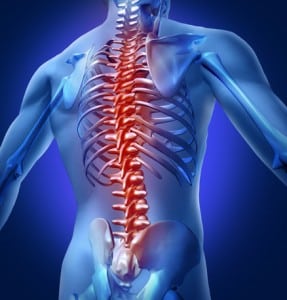 Many adult back problems have their roots in traumatic injury to the spine or the nerves surrounding it. Some back issues, however, are the result of spinal birth defects that went undetected through childhood. These birth defects may cause abnormal wear and tear on the spine, leading to discomfort, numbness and other issues later in life.
Many adult back problems have their roots in traumatic injury to the spine or the nerves surrounding it. Some back issues, however, are the result of spinal birth defects that went undetected through childhood. These birth defects may cause abnormal wear and tear on the spine, leading to discomfort, numbness and other issues later in life.
The back specialists the Southeastern Spine Institute (SSI) specialize in the diagnosis and treatment of spinal problems in adults with a wide range of treatment options both surgical and non-surgical. But while focusing on the health of your spine and surrounding nerves, your spine physician also takes into account the health of your entire body.
Pediatric Cervical Spine Deformity
Children with cervical spine birth defects often have other conditions as well, such as Down Syndrome or Dwarfism. If your child has this type of problem, there may be spinal bones pressing on the brain stem or the spinal cord itself. The compression of the spinal cord can cause abnormal brain development and a number of other issues, such as partial paralysis.
Surgery for pediatric cervical spine deformities can be quite challenging. In addition to the issue of your child’s small bones, your surgeon must take into account future growth. The approach that your surgeon uses also depends upon the location of the deformity and what needs to be repaired. The types of procedures used to make the repair include:
- Transoral approach through the mouth, using a camera on the end of a flexible tube
- Through the neck, making an incision either in front or back
- Through an incision in the upper back
During surgery, the doctor may insert bone grafts, plates or screws if your child’s spine is unstable after the procedure. Your child may need ongoing monitoring for possible complications after the surgery, especially if other birth defects exist. If the spinal repair is not made during childhood, it’s not necessarily too late — this procedure can be done on adults, but the damage that may have been done to the nerves probably can’t be repaired.
Scoliosis, Curvature of the Spine
One of the most common spinal birth defects is scoliosis or curvature of the spine. Scoliosis is most often diagnosed by a pediatrician. The cause of scoliosis is unknown, but it does seem to run in families. Many children born with this condition don’t need treatment. Mild curves of the spine may fix themselves as your child grows. For more moderate to severe cases, your child’s doctor recommends treatment based upon their particular situation. Your child’s doctor takes into account the age of your child, the gender, the type of curve and the location.
Most of the time, if treatment is required, it’s in the form of a brace to help the spine straighten naturally over time. All but the most severe cases can be resolved using this method, especially if your child is still growing. Braces are used until your child stops growing, usually about two years after puberty begins.
Severe scoliosis is most often repaired using surgical methods. Doctors might perform a spinal fusion, or place a rod in the spine to straighten it. This rod can be lengthened as your child grows if necessary. Even if your scoliosis wasn’t treated when you were a child, the doctors at SSI can provide treatment and relief for the long-term effects of your condition.
